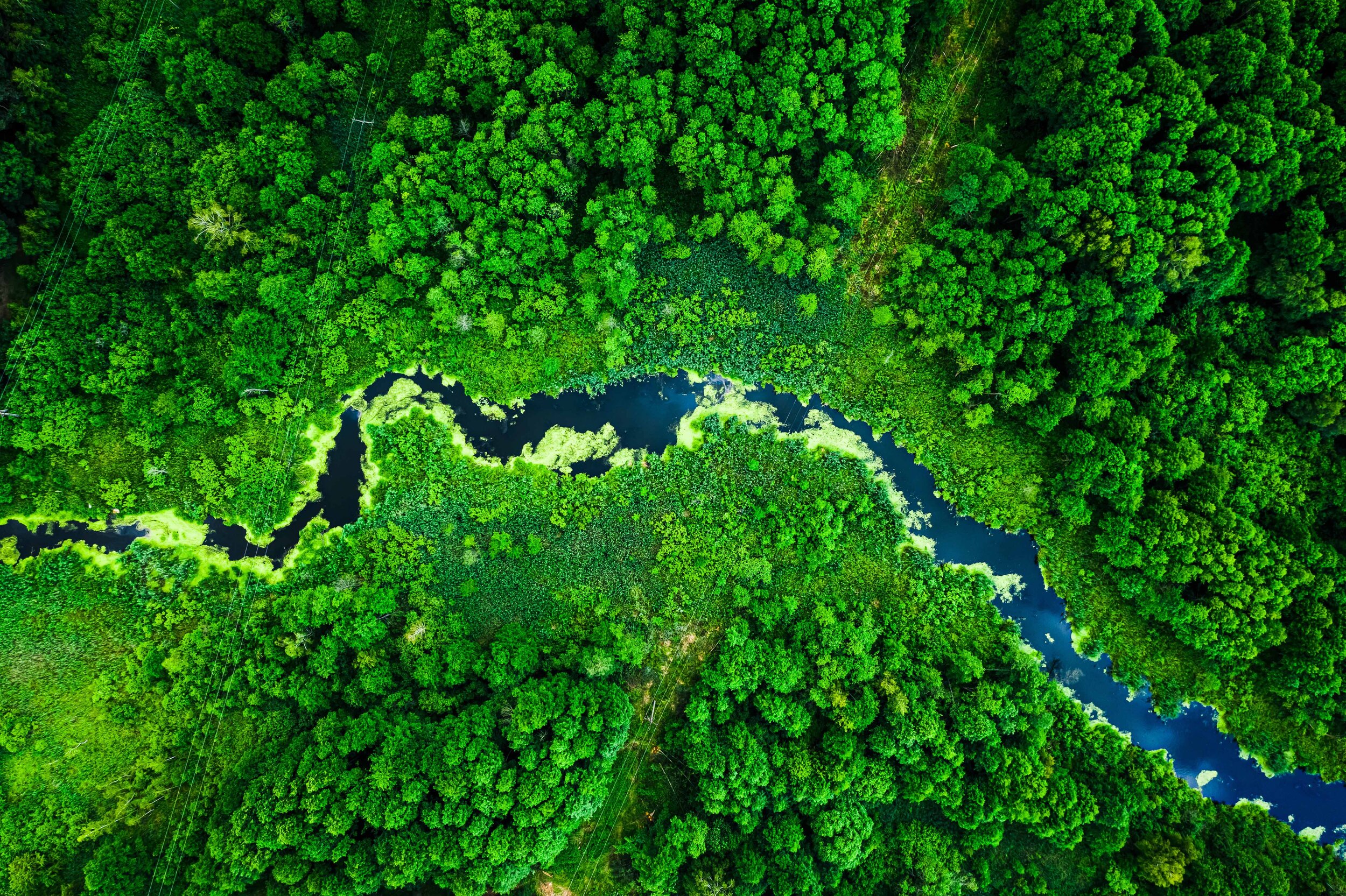Circular Economy: Changing the Logic of Consumption
Our global economy runs in a linear flow. From the uncontrolled extraction of resources, to processing and consumption, this trajectory has been deeply rooted in our economic thinking for decades. The consequences are grave. Not less than six of the nine planetary boundaries that define the safe operating space for humanity have been exceeded. If we continue like this, we will need the resources of more than two earths in less than 10 years.
One of the effects, we produce more than 2 billion tonnes of municipal solid waste per year worldwide, which often ends up directly in nature. Never before in the history of mankind has such a high concentration of CO2 been measured in the atmosphere. In addition, one million species are at risk of extinction in the coming decades as a result of the suppression of natural ecosystems.
Rethinking business in industrialised systems
Based on these developments, simply seeking incremental improvements and efficiency measures will not change the alarming situation. We must rethink the way we do business – the way we design our business models and products. We need to manage natural resources thoughtfully and should take responsibility for the products we create. Circular economy (CE), defined as a regenerative industrial system that recaptures the immense value of finite and renewable resources to use them again and again, shows a sustainable way forward. Keeping products, components and materials at their maximum utilities and values at all times reduces waste and minimises the use of virgin materials. CE not only has a positive effect on the environment, but can also improve your own company performance. Those who think in cycles change their perception of material value, intensify their customer relationships and enter into new partnerships. CE is about the interaction of different business models in circular ecosystems. A circular ecosystem coordinates itself across the business models of different complementors to create a shared value propositions with closed resource loops that are based on an aligned circular product design.
We have been studying the CE for years and found many companies that have already implemented circular solutions. To help others to get there as well, we developed the Circular Navigator, which provides step-by-step guidance for implementing an innovative circular ecosystem and the accompanying business models.
Impulse and identify: start your journey
Without an impulse, you do not start to change. It is crucial for you and your company to ask and understand how your environment will change in the future. How will consumer behaviour and regulations change and what influence do resource dependencies have on your business? Believe us, there is a reason why CE will be essential for your business.
Furthermore, identifying the impact of your company on the environment and society is crucial. Only if you know where your resources come from, how your manufacturing steps work and what happens after the usage of your products, you will be able to draw a holistic picture of your overall impact. This sharpens not only the awareness for environmental problems, but also reveals possible levers for change. In addition to a rough superficial analysis, there are various in-depth methods such as Life Cycle Assessments (LCA) to better determine these impacts.
Ideate & integrate: Redesign your reality
Now it’s time to move beyond existing solutions and break away from familiar, established concepts of how a company creates, captures and delivers value to its customers. To stimulate the generation of new ideas, we identified 40 application-oriented Circular Economy Patterns – blueprints of successful circular ecosystems. The patterns are divided into four pillars bringing together the physical side of CE with the monetary and customer perspective.
You can quickly generate ideas by applying these patterns to different customer needs, your current business model or your sustainability goals. Each pattern is backed up by numerous practical, sustainable business cases. After generating your ideas, consolidate them into a circular logic of Take-Make-Use-Recover to see the bigger picture. With this, you can identify the different business models necessary for the circular solution. Define which aspects of the whole ecosystem you can provide by yourself and where you need partners.
Wear2wear, a European textile ecosystem with eight partner companies, created workwear that is designed to easily disassemble and recycle. Their key to success was a remarkable design which avoids mixed materials and embraces modular tailoring. The German provider of coffee-to-go cups RECUP offers a sophisticated reverse logistics solution including 3000 partners. Their cups are locally produced and made of durable and easy-to-recycle polypropylene that can be used multiple times. The Swiss company FREITAG uses waste like discarded bicycle tubes to manufacture their messenger bag, and were able to create a distinguished brand with their offering. Swapfiets from the Netherlands became known for not selling bicycles, but lending them to their customers via a subscription. The price includes maintenance and repairs, which increases customer loyalty, improves the longevity and usage of the bicycles.
Imagine & incorporate
What do the American producer of sustainable, modular carpets Interface Inc, the Dutch telephone producer Fairphone and the outdoor clothing manufacturer Patagonia have in common? They became successful thanks to a driving vision. To make a circular ecosystem work, you need to align your company, partners, and customers. A vision is fundamental to achieve this, because it creates identification potential and personal meaning for everybody involved, increases the legitimacy of change, and ultimately helps to focus on the shared value proposition. While Fairphone envisions a future with only sustainable smartphones and Patagonia actively fights fast fashion, Interface’s founder Ray Anderson launched ‘Mission Zero’ in the early 1990s to reduce the company’s footprint to zero by 2020. These visions served their respective employees over several decades as the north star for change.
Like Patagonia, Fairphone and Interface, you won’t be able to deliver or create all the needed tasks, services or products in a circular ecosystem by yourself. The key to success is to have the right partners in place. Chose them according to their capabilities as well as their attitude towards change. Each ecosystem needs to have an orchestrator in place who takes the lead and coordinates all partners.
A Circular Ecosystem
Implementing the ecosystem takes place at the individual business model level. The key elements to realising the designed ecosystem and to capture the value of the circular solution is to use assumption-based testing to validate your business model ideas. This helps to de-risk and adapt all the specific requirements of the CE. This also made wear2wear successful: starting from a small pool of three companies, the product design was iteratively created and refined over several years. In the end, suitable partners were called in for a market launch. As we know from many change processes, the implementation of the envisioned solution is the most long-lasting and exhausting.
Do not be discouraged, change is not only necessary but also possible. While the CE cannot solve all problems, it is a significant step into the right direction. Ask yourself: What would you do differently today if you were responsible for taking-back all the products you sold?
About the authors
Fabian Takacs is Co-creator of the Circular Navigator, research assistant and PhD candidate at University of St. Gallen. His research is embedded in a Swiss research project called LACE (Laboratory for Applied Circular Economy) funded by the SNSF (NRP 73).
Richard Stechow is Co-creator of the Circular Navigator and active in circular consulting in Germany and France.
References
Steffen, W. et al. Planetary boundaries: Guiding human development on a changing planet. Science (80). 347, 736–747 (2015).
Rockström, J. et al. Planetary Boundaries: Exploring the Safe Operating Space for Humanity. Ecol. Soc. 14, 472–475 (2009).
Kaza, S., Yao, L., Bhada-Tata, P. & Van Woerden, F. What A Waste 2.0: A Global Snapshot of Solid Waste Management to 2050. Urban Development (2018).
NASA. Carbon Dioxide. (2019). Available at: https://climate.nasa.gov/vital-signs/carbon-dioxide/.
Díaz, S. et al. Summary for policymakers of the global assessment report on biodiversity and ecosystem services of the Intergovernmental Science-Policy Platform on Biodiversity and Ecosystem Services. Intergovernmental Platform on Biodiversity and Ecosystem Services (2019).
Intergovernmental Platform on Biodiversity and Ecosystem Services. IPBES Workshop on Biodiversity and Pandemics. (2020).
Carrington, D. Protecting nature is vital to escape 'era of pandemics’ – report. The Guardian (2020).
Ellen MacArthur Foundation. Towards the Circular Economy: Economic and business rationale for an accelerated transition. (2013).
Bocken, N. M. P., Olivetti, E. A., Cullen, J. M., Potting, J. & Lifset, R. Taking the Circularity to the Next Level: A Special Issue on the Circular Economy. J. Ind. Ecol. 21, 476–482 (2017).
Takacs, F., Frankenberger, K. & Stechow, R. Circular Ecosystems: Business Model Innovation for the Circular Economy. White Paper of the Institute of Management & Strategy (2020).
Bleicher, K. & Abegglen, C. Das Konzept Integriertes Management: Visionen - Missionen - Programm. (Campus Verlag GmbH, 2017).






